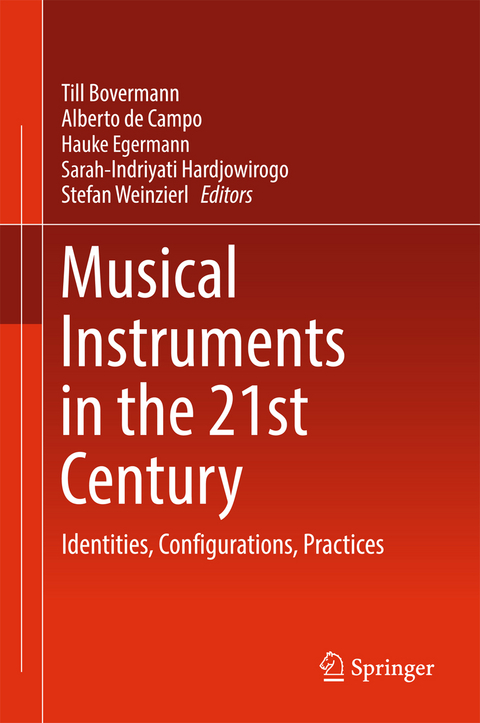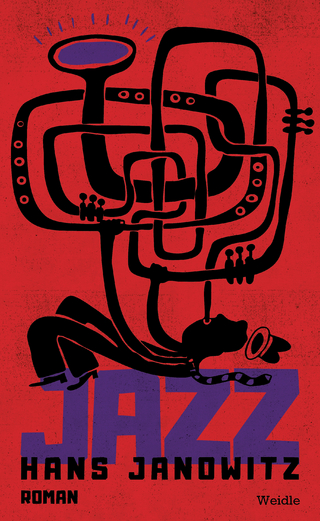
Musical Instruments in the 21st Century
Identities, Configurations, Practices
Seiten
2016
|
1st ed. 2017
Springer Verlag, Singapore
978-981-10-2950-9 (ISBN)
Springer Verlag, Singapore
978-981-10-2950-9 (ISBN)
Exploring the many types and forms of contemporary musical instruments, this book provides insights from science, humanities and the arts, discussing such questions as: What are the conditions under which an object is recognized as a musical instrument? How do we address the question of instrumental identity within an instrument s design process?
By exploring the many different types and forms of contemporary musical instruments, this book contributes to a better understanding of the conditions of instrumentality in the 21st century. Providing insights from science, humanities and the arts, authors from a wide range of disciplines discuss the following questions:
· What are the conditions under which an object is recognized as a musical instrument?
· What are the actions and procedures typically associated with musical instruments?
· What kind of (mental and physical) knowledge do we access in order to recognize or use something as a musical instrument?
· How is this knowledge being shaped by cultural conventions and temporal conditions?
· How do algorithmic processes 'change the game' of musical performance, and as a result, how do they affect notions of instrumentality?
· How do we address the question of instrumental identity within an instrument's design process?
· What properties can be used to differentiate successful and unsuccessful instruments? Do these properties also contribute to the instrumentality of an object in general? What does success mean within an artistic, commercial, technological, or scientific context?
By exploring the many different types and forms of contemporary musical instruments, this book contributes to a better understanding of the conditions of instrumentality in the 21st century. Providing insights from science, humanities and the arts, authors from a wide range of disciplines discuss the following questions:
· What are the conditions under which an object is recognized as a musical instrument?
· What are the actions and procedures typically associated with musical instruments?
· What kind of (mental and physical) knowledge do we access in order to recognize or use something as a musical instrument?
· How is this knowledge being shaped by cultural conventions and temporal conditions?
· How do algorithmic processes 'change the game' of musical performance, and as a result, how do they affect notions of instrumentality?
· How do we address the question of instrumental identity within an instrument's design process?
· What properties can be used to differentiate successful and unsuccessful instruments? Do these properties also contribute to the instrumentality of an object in general? What does success mean within an artistic, commercial, technological, or scientific context?
| Erscheinungsdatum | 04.01.2017 |
|---|---|
| Zusatzinfo | 50 Illustrations, color; 45 Illustrations, black and white; VII, 412 p. 95 illus., 50 illus. in color. |
| Verlagsort | Singapore |
| Sprache | englisch |
| Maße | 155 x 235 mm |
| Themenwelt | Kunst / Musik / Theater ► Musik ► Instrumentenkunde |
| Mathematik / Informatik ► Informatik ► Grafik / Design | |
| Naturwissenschaften ► Physik / Astronomie ► Mechanik | |
| Technik ► Maschinenbau | |
| Schlagworte | Audience’s Experience • Digital Musical Instruments • Instrumental Assemblage • Instrumental Modality • Interactive Musical Instruments • Musical Instrumentality • Musical Instrument Design • Pitch Coding • Real-Time Music Performances • Virtual Musical Instrument. |
| ISBN-10 | 981-10-2950-4 / 9811029504 |
| ISBN-13 | 978-981-10-2950-9 / 9789811029509 |
| Zustand | Neuware |
| Haben Sie eine Frage zum Produkt? |
Mehr entdecken
aus dem Bereich
aus dem Bereich
Roman
Buch | Hardcover (2024)
Wallstein Erfolgstitel - Belletristik und Sachbuch (Verlag)
CHF 27,95
die Sammlung von Bernhard Kolberg
Buch | Hardcover (2024)
E Reinhold (Verlag)
CHF 54,60


